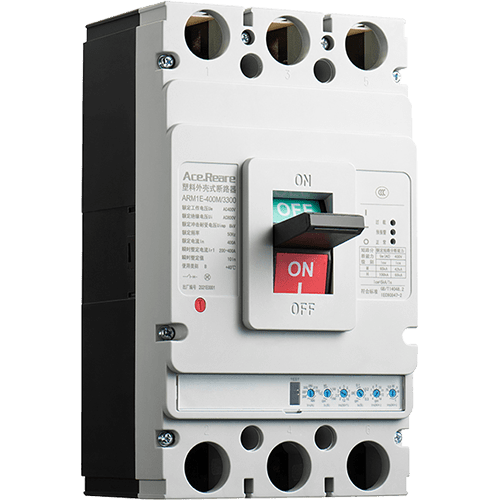
Date | 2022-08-11 09:06:24
The main role of the Moulded Case Circuit Breaker (MCCB) is to protect distribution room software and motors from load and short circuit faults in the power supply circuit. Due to their safety and reliability, they have become a widely used commodity in industrial production. Miniature circuit breakers (MCB) are also a widely used category with a wide range of circuit breaker products. Their specific role is to provide protection for electrical engineering terminal equipment distribution equipment. As both are circuit breakers, plastic case circuit breakers are mainly used for small capacity circuit breakers, it is particularly practical and important to have the right equipment selection. Make a simple statement.
Let's start with the basic homogeneity, as both belong to circuit breakers. Both have to follow some of the main product implementation standards and have the same principles. Then the differences between the two. In general, there are several aspects:
1. not the same main technical parameters for the management of electrical equipment.
2. different main parameters of the mechanical equipment. 3.
3. the use of different office environments.
In addition, from the point of view of purchase, there is generally a difference between the two.

Current levels are different
Plastic products shell circuit breaker larger impact current technical level of 2000A. miniature circuit breaker larger working current through the level of significantly lower than 125A. because they are both very different from each other volume, plastic as a shell circuit breaker reasonable planning total area also more than a miniature circuit breaker, the relative nature of the transmission line is thick, up to 35 square meters or more, while the miniature circuit breaker is only applicable to 10 square meters to within the transmission line.
Different assembly methods
The key choice of plastic case circuit breaker screw assembly, easy to disassemble, feel good, stable operation. Miniature circuit breakers are assembled according to a slide rail, sometimes due to insufficient torque and poor contact. Due to the two different assembly methods, plastic-cased circuit breakers are more stable and more difficult to install than small and medium-sized circuit breakers.
Practical operation and service life
Practical operation. Plastic case circuit breakers are selected with 2 sets of equipment, each set protecting overcurrent and short-circuit fault current protection posture values can be adjusted manually, saving time and effort. Miniature circuit breakers are equipped with a set of overcurrent and short-circuit fault equipment, the current can not be adjusted, resulting in repeatedly unable to deal with the problem. Plastic case circuit breaker has a large spacing, blowing magnetic cover, arc extinguishing capacity, can withstand larger short-circuit fault current, not easy to cause replacement short-circuit fault, service life higher than the calibration of miniature circuit breaker leaders.
Application operational flexibility
In this respect, plastic-case circuit breakers are more prominent, with better flexibility in calibrated operation than miniature circuit breakers. The overcurrent and short-circuit fault protection devices of the moulded case circuit breakers are independent and can sensitively adjust the action values of the medium-current protection. The overcurrent and short-circuit fault protection of the micro circuit breaker is a unified device with some shortcomings in terms of adjustable operational flexibility.
Based on conducting the above-mentioned research situation, micro-breakers seem to us to be at a disadvantage, but in reality, there are still situations in which micro-breakers must be selected through. For example, when it is necessary to constantly improve the safety of technical routes, because micro-breakers have a higher posture sensitivity and a rapid breaker posture, more beneficial for the protection of routes and electrical company equipment.